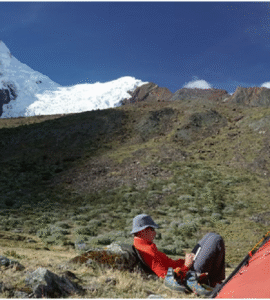 Posted On
Posted On
Boosting Team Performance on the Road: Crafting Improvement Plans for Travel Pros
 Posted On
Posted On
Picture this: you’re orchestrating a dream safari in Tanzania, but a team member fumbles critical lodge bookings due to last-minute weather shifts. In the whirlwind of the travel industry—where unpredictable monsoons, client wanderlust, and packed itineraries collide—every team member must be a seasoned navigator. As someone who’s steered remote travel teams through chaotic seasons (like that time I juggled a group tour during a Caribbean hurricane alert), I know how one misstep can derail an epic journey. Enter the performance improvement plan (PIP)—a compass to guide your crew back on track, ensuring every trip is a masterpiece.
Here at MeteoInsider.com, where weather shapes every travel plan, we’ll dive into crafting a PIP tailored for travel pros. From boutique agencies to adventure tour operators, these steps will help your team conquer challenges like seasoned explorers, delivering unforgettable journeys.
Understanding the PIP: Your Itinerary for Success
A PIP is your team’s personalized travel guide, mapping out steps to elevate performance. Think of it as a detailed itinerary with destinations (goals), routes (actions), and pit stops (milestones). In travel, where remote work is the norm—agents crafting itineraries from beachside cafes or guides updating blogs from mountain trails—a PIP tackles issues like delayed weather alerts for clients or sloppy coordination for group tours.
I once worked with a remote coordinator who missed updating clients on a snowstorm’s impact on their ski trip. A PIP turned that chaos into a learning journey, helping them master weather-integrated planning and client communication.
When to Deploy a PIP in Travel Teams
Timing is critical, like catching a flight before a storm hits. Launch a PIP when performance falters—say, a team member overlooks real-time weather updates for a coastal tour or fails to sync with partners on international bookings. It’s perfect for roles like travel planners, who juggle weather data, or content creators crafting storm-safe travel guides.
Act early to avoid a crisis, like a missed volcano trek cancellation during an ash cloud warning. In remote setups, spotting issues via collaboration tools can keep your team on course.
Step 1: Start with a Warm, Wanderlust-Filled Chat
Kick off with a one-on-one, like planning a cozy campfire chat under the stars. Keep it private and positive—send an email praising their passion for travel. With teams spread across time zones, from Tokyo to Tulum, video calls are your go-to.
Prepare notes on issues, like missed deadlines for monsoon-season itineraries, but invite their perspective. I once had a heart-to-heart with a colleague overwhelmed by coordinating multi-city tours during rainy seasons—opening the dialogue sparked solutions.
Step 2: Dig into Tools and Travel Data
Review performance objectively. Are they equipped for the journey? In travel, this means access to weather APIs, booking platforms, or itinerary software. Pinpoint root causes—maybe they lack training on forecasting disruptions for tropical getaways.
Equip them with tools like Controlio software, an employee monitoring program, to track productivity (like timely updates on flight delays) without micromanaging, ensuring they thrive in dynamic travel scenarios.
Step 3: Listen Like You’re Exploring a New City
Active listening is your guide—nod, paraphrase, and show empathy. During my hurricane tour fiasco, listening revealed my team member was swamped by personal challenges amid stormy weather. This built trust, making the PIP feel like a travel buddy, not a taskmaster.
Ask open questions: “What’s tough about syncing weather updates with client plans?” It transforms the PIP into a shared adventure.
Step 4: Align Goals Like Mapping a Dream Trip
Revisit company goals—think boosting client satisfaction for weather-smart adventures—and their personal dreams, like becoming a lead expedition planner. Share the vision: How does their role craft seamless, storm-proof vacations?
This alignment is like plotting a cross-country road trip, ensuring everyone’s headed to the same horizon.
Step 5: Document the Journey Plan
Document everything—concerns, goals, and action steps. Use a template: List issues (e.g., delayed responses to clients during heatwaves), milestones (e.g., design 10 weather-proof itineraries in a month), and check-in dates.
Co-create the plan, letting them pick tools or training. For fun, frame milestones as “passport stamps” on their travel to success.
Step 6: Check In Like Tracking a Flight Path
Schedule regular check-ins to monitor progress, like tracking a flight through turbulent skies. Celebrate wins, like nailing a last-minute itinerary reroute during a blizzard, to keep spirits soaring.
In remote travel teams, these virtual meetups keep the journey on track.
Final Note: Charting Epic Adventures Together
A PIP isn’t a detour; it’s a reroute to stellar performance. In travel, where weather and wanderlust shape every move, empowered teams create magical experiences. From my global treks, I’ve learned that with patience and a solid plan, any team member can become a trailblazer. Craft your PIP, and watch your team turn stormy challenges into smooth sails. Happy travels!








